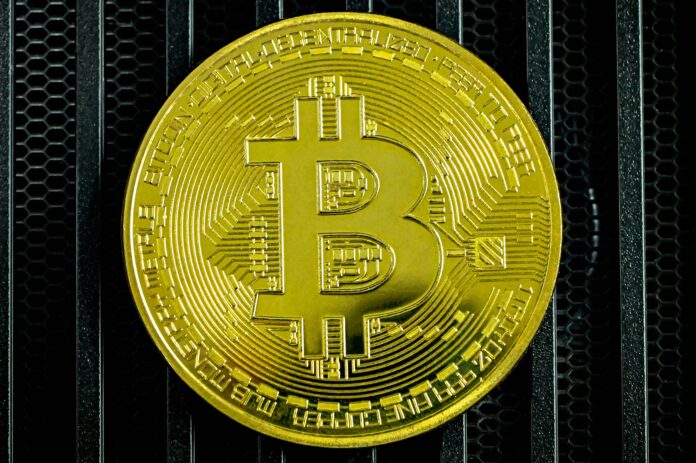Bitcoin is on the brink of yet another crucial decision that could define its trajectory for years to come. While the asset has remained a cornerstone of decentralised finance, its infrastructure is once again being scrutinised by developers and the wider community. The latest debate revolves around two proposed upgrades—OP_CAT and OP_CTV—each representing a different vision for Bitcoin’s future. One promises increased programmability, while the other prioritises security and simplicity. The question is: which path should Bitcoin take?
Unlike Ethereum, which has embraced programmability through smart contracts, Bitcoin has maintained a more conservative approach. Its scripting language is deliberately limited to prevent potential security vulnerabilities. However, as the landscape of decentralised finance expands, the pressure to introduce more complex functionalities has intensified. Previous upgrades such as SegWit and Taproot have made incremental improvements, but now the stakes are higher. Developers find themselves at a crossroads, weighing the benefits of adaptability against the risks of introducing unforeseen weaknesses.
Bitcoin’s scripting language functions as a rulebook, dictating how transactions are executed. At its core, the UTXO model ensures that unspent transaction outputs are systematically recorded and verified. This design has contributed to Bitcoin’s resilience, but it also imposes constraints. The rigid framework makes it difficult to implement advanced financial mechanisms, limiting Bitcoin’s capacity to compete with more versatile networks. Some argue that Bitcoin should remain simple, ensuring its longevity as a decentralised and censorship-resistant asset. Others believe that a lack of evolution could lead to stagnation, making it less relevant in an increasingly dynamic crypto landscape.
Enter OP_CTV (BIP 119), a proposal designed to introduce a form of transaction programmability without compromising Bitcoin’s security. This upgrade would enable users to predefine spending conditions, effectively allowing transactions to be locked into specific future pathways. The implications are significant. OP_CTV could facilitate congestion control, improve vault security, and streamline payment channels, all without the computational overhead associated with Ethereum-style smart contracts. The deterministic nature of OP_CTV minimises risks, making it an attractive option for those wary of adding unnecessary complexity to Bitcoin’s ecosystem.
However, critics argue that OP_CTV may be too limited. While it introduces a level of programmability, it does so in a highly restrictive manner. Those advocating for greater flexibility see an alternative in OP_CAT (BIP 347). This proposal seeks to revive a function that was originally present in Bitcoin’s early code but was later disabled by Satoshi Nakamoto. OP_CAT would allow scripts to concatenate data dynamically, opening the door to more sophisticated use cases. Advanced multisignature wallets, trustless bridges, and even zero-knowledge rollups could become viable on Bitcoin’s base layer.
Yet, with greater power comes greater risk. OP_CAT’s flexibility raises concerns about potential attack vectors. By enabling scripts to manipulate data in new ways, unforeseen vulnerabilities could emerge. Bitcoin has maintained its dominance partly due to its predictable and secure nature. Deviating from that principle, some argue, could introduce long-term instability. Lessons from other blockchain networks serve as cautionary tales—complexity often leads to increased attack surfaces, and once a change is implemented, reversing it is rarely straightforward.
Beyond the technical considerations, there is also the matter of governance. Implementing changes in Bitcoin is notoriously difficult. Unlike centralised projects where upgrades are dictated from the top, Bitcoin relies on community consensus. Soft forks, the preferred method for introducing upgrades, require broad agreement among miners, developers, and node operators. Past upgrades such as SegWit and Taproot were not without controversy, and there is no guarantee that OP_CAT or OP_CTV will gain sufficient support.
Bitcoin’s decentralised governance structure means that even seemingly beneficial changes can take years to implement. The pushback against SegWit, which eventually led to the Bitcoin Cash fork, highlights how ideological divisions can fracture the community. Similarly, Taproot’s activation, while largely successful, introduced unintended consequences such as the rise of Ordinals and BRC-20 tokens, which some believe have clogged the network. These historical precedents serve as reminders that every modification carries trade-offs.
While OP_CTV presents a relatively conservative path forward, OP_CAT’s broader implications could be game-changing. Proponents argue that enabling more complex scripting could help Bitcoin integrate with emerging decentralised finance solutions without relying on external chains. Trustless bridges, for example, could allow seamless interoperability between Bitcoin and other blockchain ecosystems, reducing dependence on centralised custodians. Similarly, enhanced vault mechanisms could introduce new ways to safeguard Bitcoin holdings, making self-custody more robust.
On the other hand, sceptics worry that OP_CAT could introduce unintended consequences. Increased script complexity could lead to unpredictable transaction behaviour, making security audits more challenging. Bitcoin’s simplicity has long been one of its greatest strengths, and any deviation from that principle should be approached with extreme caution. Additionally, introducing a more flexible scripting function could pave the way for increased spam transactions, potentially leading to higher fees and congestion—issues that Bitcoin has historically sought to avoid.
The debate extends beyond developers and hardcore Bitcoiners. Institutional players, miners, and even everyday users have a stake in the outcome. For miners, changes to the transaction model could affect revenue structures, influencing their support for or against a particular proposal. For institutional investors, the risk profile of Bitcoin could shift depending on the chosen upgrade. If Bitcoin becomes more programmable, it could attract new use cases but also new regulatory scrutiny. Conversely, if it remains too rigid, its dominance could be challenged by more adaptable networks.
The path forward remains uncertain. While OP_CTV offers a measured approach to improving Bitcoin’s functionality, OP_CAT introduces a bolder vision of what the network could become. The coming months will likely see heated discussions, developer workshops, and perhaps even testnet implementations to gauge feasibility. Ultimately, any upgrade must strike a balance between innovation and security, ensuring that Bitcoin remains both resilient and relevant.
Whatever the outcome, one thing is clear—Bitcoin is far from stagnant. The ongoing discourse surrounding OP_CAT and OP_CTV is a testament to its dynamic nature. Whether through careful iteration or bold experimentation, the network continues to evolve. The decision ahead will not just shape Bitcoin’s technical landscape; it will define its role in the broader digital economy for years to come. The fork wars may not be over, but they are certainly heating up again.


